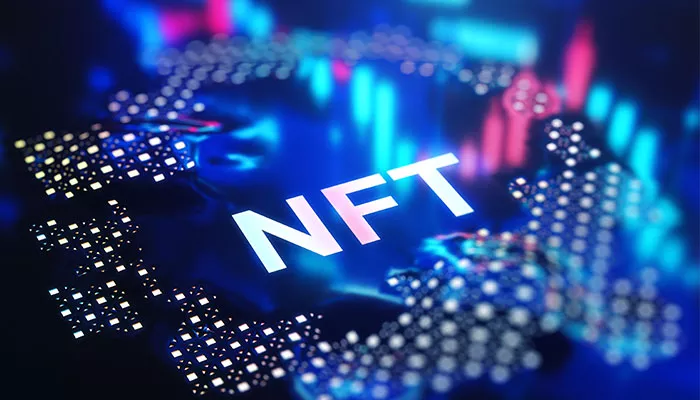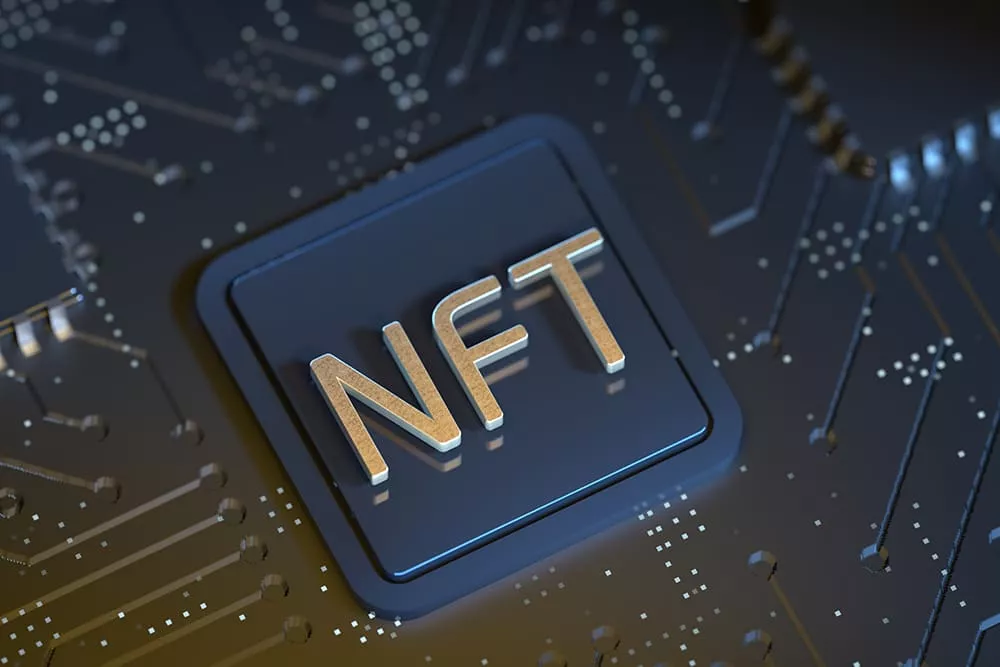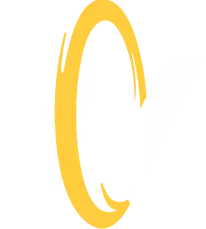From Creation to Collection: Navigating the NFT Space
The rise of Non-Fungible Tokens (NFTs) has transformed the way we perceive, create, and trade digital assets.The rise of Non-Fungible Tokens (NFTs) has transformed the way we perceive, create, and trade digital assets. From digital art and music to virtual real estate and collectibles, NFTs represent a revolutionary shift in ownership and creativity in the digital realm. This comprehensive guide will take you through the entire NFT journey, from creation to collection, helping you navigate the intricate and exciting world of NFTs.
Understanding NFTs: The Basics

What Are NFTs?
NFTs, or Non-Fungible Tokens, are unique digital assets stored on a blockchain, most commonly Ethereum. Unlike cryptocurrencies such as Bitcoin or Ethereum, which are interchangeable, NFTs are one-of-a-kind and cannot be exchanged on a one-to-one basis. Each NFT has a distinct value and properties, making them ideal for representing ownership of digital items.
How Do NFTs Work?
NFTs are created using smart contracts on blockchain networks. These smart contracts encode the unique attributes and ownership details of the NFT. When an NFT is minted, or created, it is assigned a unique identifier that distinguishes it from all other tokens. This identifier is stored on the blockchain, ensuring that the NFT's provenance and ownership history are immutable and transparent.
Creating NFTs: The Process
Step 1: Conceptualize Your NFT
Before diving into the technical aspects of creating an NFT, it's crucial to have a clear concept. Whether you're an artist, musician, or game developer, think about what makes your digital asset unique. Consider the value it brings to potential collectors and how it stands out from other NFTs.
Step 2: Choose Your Blockchain
While Ethereum remains the most popular blockchain for NFTs, other networks like Binance Smart Chain, Flow, and Polygon are also gaining traction. Each blockchain has its own advantages, such as lower transaction fees or faster processing times. Choose the one that best suits your needs and technical expertise.
Step 3: Set Up a Digital Wallet
To create and trade NFTs, you'll need a digital wallet that supports your chosen blockchain. Wallets like MetaMask, Trust Wallet, and Coinbase Wallet are widely used in the NFT community. Ensure your wallet is funded with cryptocurrency to cover the minting and transaction fees.
Step 4: Mint Your NFT
Minting an NFT involves uploading your digital asset to an NFT marketplace and creating a unique token. Marketplaces like OpenSea, Rarible, and Wondoria offer user-friendly interfaces for minting NFTs. Follow the platform's instructions to upload your file, add metadata (such as title, description, and properties), and set the terms of sale.
Step 5: Promote Your NFT
Once your NFT is minted, promotion is key to attracting potential buyers. Leverage social media platforms, NFT communities, and online forums to showcase your creation. Engage with your audience, share behind-the-scenes content, and collaborate with other creators to increase visibility.
Collecting NFTs: The Experience
Step 1: Research the Market
Before purchasing an NFT, it's essential to research the market and understand current trends. Platforms like OpenSea, Foundation, and Wondoria offer insights into trending collections, top sellers, and upcoming drops. Take the time to explore different categories and find NFTs that resonate with your interests and investment goals.
Step 2: Evaluate Authenticity and Provenance
One of the key benefits of NFTs is the ability to verify authenticity and provenance through the blockchain. Check the ownership history and the creator's credentials before making a purchase. Platforms like Wondoria provide detailed information about the NFT's history, ensuring transparency and trust in the transaction.
Step 3: Purchase Your NFT
Once you've found an NFT you're interested in, the purchasing process typically involves bidding in an auction or buying at a fixed price. Ensure your digital wallet is funded and connected to the marketplace. Follow the platform's instructions to complete the transaction, and the NFT will be transferred to your wallet.
Step 4: Manage Your Collection
Managing your NFT collection involves organizing and securing your digital assets. Use digital wallets to store your NFTs safely, and consider using platforms like Wondoria to showcase your collection to the public. Regularly monitor the market value of your NFTs and stay informed about upcoming trends and opportunities.
The Impact of NFTs on Various Industries
Art and Creativity
NFTs have revolutionized the art world by providing artists with new ways to monetize their work. Digital artists can now sell their creations directly to collectors without relying on traditional galleries or auction houses. This democratization of the art market has led to a surge in creativity and innovation, with artists experimenting with new mediums and formats.
Music and Entertainment
Musicians and entertainers are also leveraging NFTs to connect with fans and generate revenue. NFTs can represent ownership of music tracks, concert tickets, or exclusive content. Artists can offer limited-edition releases and special experiences, creating a deeper engagement with their audience.

Gaming and Virtual Worlds
The gaming industry has embraced NFTs to create unique in-game assets and virtual real estate. Players can buy, sell, and trade NFTs within virtual worlds, creating a vibrant digital economy. NFTs enable true ownership of in-game items, allowing players to transfer assets between games and platforms.
Real Estate and Virtual Property
NFTs are not limited to digital art and collectibles; they also have applications in real estate. Virtual property platforms like Decentraland and The Sandbox allow users to buy, sell, and develop virtual land. These virtual properties can appreciate in value and generate income through leasing or hosting events.
Challenges and Considerations
Environmental Concerns
The environmental impact of blockchain technology, particularly proof-of-work blockchains like Ethereum, has raised concerns. The energy consumption required for mining and transactions can be significant. However, many blockchain networks are transitioning to more energy-efficient models, such as proof-of-stake, to mitigate these concerns.
Legal and Regulatory Issues
The legal and regulatory landscape for NFTs is still evolving. Issues related to copyright, intellectual property, and taxation need to be carefully navigated. Creators and collectors should stay informed about the legal implications of their activities and seek professional advice when necessary.
Market Volatility
The NFT market can be highly volatile, with prices fluctuating rapidly. While some NFTs have seen exponential increases in value, others may lose value over time. It's essential to approach NFT investment with caution and diversify your portfolio to manage risk.
The Future of NFTs
The future of NFTs is promising, with continued innovation and adoption across various industries. As blockchain technology evolves, NFTs will become more accessible and integrated into everyday life. Here are some trends to watch:
Integration with Augmented Reality (AR) and Virtual Reality (VR)
The integration of NFTs with AR and VR technologies will create immersive experiences for users. Imagine walking through a virtual gallery and interacting with digital art in real-time or owning a virtual home that you can decorate with NFT furniture and accessories.
Expansion of NFT Use Cases
Beyond art and entertainment, NFTs will find applications in fields like education, healthcare, and finance. NFTs can represent educational credentials, medical records, or financial instruments, providing secure and verifiable ownership.
Enhanced Interoperability
As more blockchain networks and platforms emerge, interoperability will become crucial. Efforts to standardize NFT protocols and enable cross-chain transactions will enhance the fluidity and accessibility of the NFT market.
Conclusion
From creation to collection, the NFT space offers a dynamic and exciting landscape for artists, collectors, and investors. By understanding the fundamentals of NFTs, navigating the creation and purchasing processes, and staying informed about industry trends and challenges, you can make the most of this revolutionary technology. As platforms like Wondoria continue to innovate and support the NFT community, the future of digital ownership and creativity looks brighter than ever.
